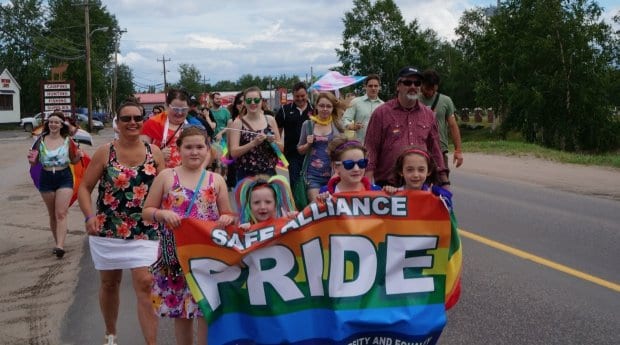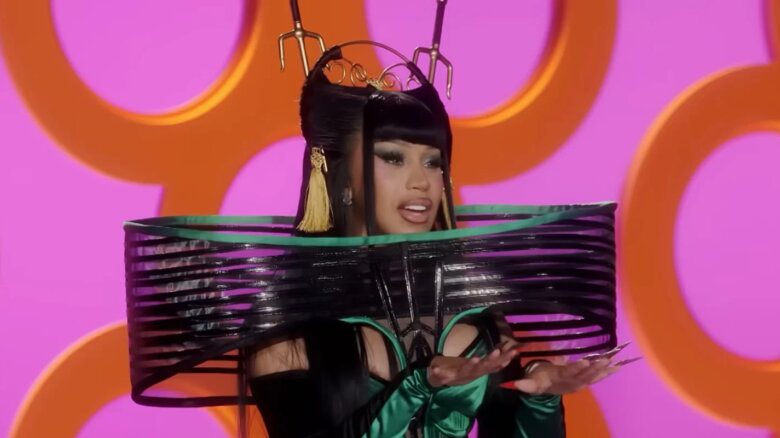A colourfully clad group marches down Hamilton River Road in Happy Valley-Goose Bay, cheering, blasting music and hoisting flags — the blue, pink and white transgender flag fluttering in the wind makes its first appearance on the town’s streets. The vehicles that pass by honk their greetings, their drivers smiling and waving in support. The sunny afternoon of Aug 16 marks the sixth annual Pride celebration in the remote northern community.
According to Denise Cole, head of the Safety Alliance, a local activist group which organized the event, this year’s procession is the best and the biggest. “There were more people involved, and the energy is just stellar,” she says.
The procession winds its way to Kinsman Park, where over 100 people from across Labrador have gathered to dance, play games, eat cake and share the message of inclusiveness. The event attracts a variety of people: same-sex families from remote indigenous communities attending their first Pride event, a soldier in full uniform, along with local government and aboriginal representatives who take the stage to offer support.
Labrador Innu Grand Chief Anastasia Qupee speaks about the struggles of growing up on reserve, and about the key role Pride plays in promoting inclusion and self-acceptance in communities.
“Growing up in Sheshatshiu . . . in a life that was strange to my parents who were more familiar with living in the country was not easy. I was into my early adult years before I realized that I did not have to measure myself against others. I only had to be proud of who I was and do all I could in my community to help, to be a part of change,” she says.
“By being here we are all making change and opening the doors for greater inclusion,” she says. “The Pride model of promoting respect, inclusion, diversity and equality can be applied anywhere.”
Some participants think Pride is especially important in rural communities.
“This is my first Pride,” says Kevin Garneau, a recent transplant from Montreal. “I never went to Pride in Montreal, but I thought it was more important to participate here. I think it has a bigger impact in the community.”
Indigenous journalist Ossie Michelin and his husband drove from North West River, a town of just over 400 people, to attend the event.
“I’ve been to Pride in Halifax, Montreal and Toronto, and had a good time, but never felt any real reason to be proud,” Michelin says. “At the march today, I felt I was helping make LGBTQ people more visible in my hometown, and that actually made me feel proud.”
Acceptance of the LGBT community is growing in Goose Bay. According to Jacinda Beals, founder of the region’s first group for the community, the Labrador Lesbian and Gay Society, attitudes have changed in the past 20 years.
When Beals started the now defunct group she received hate mail and had concerns about the safety of participants. “When we organized the first meeting, we had RCMP circle the building,” she recalls. “There were some people who drove around the block six or seven times just to gather enough courage to get through the door. We were afraid to have a little private meeting and now we are here in the park and strutting down the street, proud of who we are.”
Cole, who is now in her late 30s, grew up in a religious community on the south coast of Labrador, where it was difficult to be open about her sexuality. “I came out when I was away, and it was really scary to think about going back to the community,” she says. “Now I see Goose Bay as a place that really embraces me for who I am.”
For Cole, who identifies as two-spirited, reclaiming her indigenous heritage has helped her become more comfortable with her sexuality.
“I believe that colonization is what first made people here see homosexuality as a sin,” she explains. “For me it is a real source of pride that I recognize myself as two-spirited — I do not need to look for other labels; I have both male and female spirits within me.”

 Why you can trust Xtra
Why you can trust Xtra


